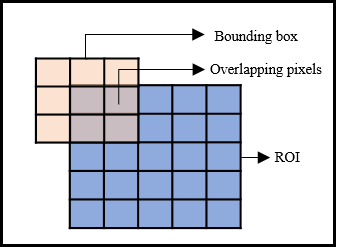bboxerase
Syntax
Description
bboxB = bboxerase(bboxA,window)bboxA that lie within a region of
interest (ROI) specified by window. The output is the set of bounding
boxes retained from the input bboxA. This function supports 2-D and
3-D bounding boxes.
Note
To perform random erase or cutout data augmentation, use
bboxerase along with the imerase
function.
___ = bboxerase(___,EraseThreshold=
additionally specifies the threshold for the amount of overlap between a bounding box region
and the specified ROI. A bounding box is removed if the overlap between the bounding box
region and the ROI is equal to or greater than the specified threshold.threshold)
Examples
Input Arguments
Output Arguments
Version History
Introduced in R2021a
See Also
imerase | Rectangle | randomWindow2d | imref2d | affineOutputView | insertObjectAnnotation


